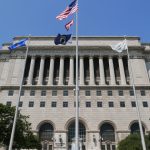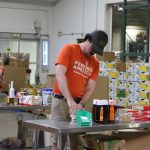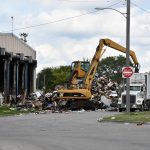Agricultural Urbanism
“Growing Local” is a great example of how New Urbanism has evolved to keep current with recent developments in urban planning. While the interface of agriculture and urbanism was barely touched upon in urban theory only, 10 or even 5 years ago, the economic downturn and increasing food prices have made the relationship between people and their food a key issue in addressing the sustainability of the built environment for the long term. At the center of the discussion around urban agriculture is Milwaukee’s MacArthur Genius Grant recipient, Will Allen of Growing Power who is speaking at the Saturday Morning Plenary session.
Will Allen has more in common with New Urbanism than people might initially think. He promotes community gardens and concentrates his efforts on the distribution of healthy food to areas of the city that have been called “food deserts”. The agricultural technologies he develops and inspires others to develop have the potential to transform how we think about and relate to agriculture within our cities. He is an alumnus of the University of Miami and is dedicated to educating people about agriculture through the many workshops he provides at Growing Power. In fact, I feel his greatest contribution is showing that ideas have the power to reinvigorate society if disseminated property.
As it goes, the combination of agriculture and urban theory has produced many theories on how best to integrate the two. Agricultural Urbanism has emerged as the model for New Urbanists, it is also the title of a book, of the same name, that is an interesting read. A session on Thursday “The Many Faces of Agricultural Urbanism” will explain how urban agriculture fits into the paradigm of New Urbanism and how the two are complementary to each other. It will concentrate on regional food systems and the application of agricultural urbanism to central-city neighborhoods.
Examples of building local communities through the use of agriculture can be seen in a number of events during the congress. A Thursday tour of Troy Gardens called “Model Urban Agriculture Projects Grow Communities” will show firsthand the use of agriculture in community building. On Friday a session titled “Opportunities and Examples of Urban Agriculture” will explore scale, longevity and the intensity variables of the implementing agriculture to help build communities through the use examples. Breakfast sessions on Saturday provide two opportunities to learn about either food systems or growing and presenting local foods. The famous Dane County Farmers Market at capitol square is also taking place on Saturday morning and is great example of how agriculture works in Madison.
One measure of the success of urban agriculture is regular events like farmers markets; “How Do We Know When Urban Agriculture is Working?” a Saturday session that will explore different ways of measuring urban agriculture’s impact on cities. It will also discuss a broad agenda for urban agriculture, which includes the profitability of farmers and its use of natural resources.
The development of agriculture has been synonymous with the advancement of civilization. Since the ancient settlements between the Tigris and Euphrates rivers to the development of industrial farming techniques that produced enough food to support the population increases of the last century advancements in technology have proved essential to increased agricultural productivity. In the Milwaukee area we have seen the propagation of these technologies into business models that are trying to turn old industrial/manufacturing buildings into productive places again. Their ability to compete with conventional agriculture and the impact they will have on communities are directly related to the development of technologies that work symbiotically with ecological processes like aquaponics. The challenge of feeding people in the 21st century includes building agricultural practices that have small energy, water, material and land footprints. These are a very different set of challenges than that of the 20th century that viewed these resources to be almost unlimited. Milwaukee and Wisconsin have the opportunity to become leaders in the development and manufacturing of these technologies, just like we were the leaders of agricultural technology and manufacturing a century ago. The real solution for agriculture in the 21st century will inevitably be some combination of conventional agriculture, community gardens, local food distribution and advancements in agricultural technologies.
All of these aspects of urban agriculture will be a part of CNU 19 to a greater or lesser extent, so I hope you will join us.
See you at CNU!
Guest Post by: Dr. Matthew Trussoni
Dr. Matthew Trussoni, AIA, PE is an Assistant Professor at the Milwaukee School of Engineering




















